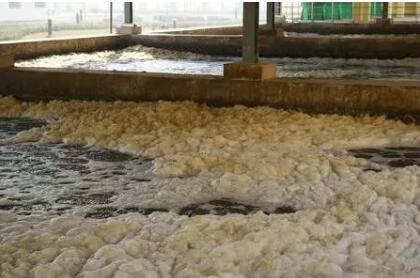Activated sludge expansion can be divided into: filamentous bacterial sludge expansion caused by excessive proliferation of filamentous bacteria in the sludge and non-filamentous bacterial sludge expansion without the presence of a large number of filamentous bacteria. In fact, more than 90% of sludge expansion is caused by filamentous bacteria, and less than 10% is caused by non-filamentous bacteria.
Non-filamentous sludge expansion
The non-filamentous bacteria expansion mainly occurs when the wastewater water temperature is low and the sludge load is too high. At this time, the bacteria adsorb a large amount of organic matter, which is less than metabolism, and accumulates a large amount of highly viscous polysaccharide substances outside the cell, so that the surface attachments are greatly increased. It is difficult to precipitate compression. When nitrogen is seriously deficient, it is also likely to cause swelling. Because if nitrogen is deficient, the microorganisms cannot fully utilize the carbon source to synthesize cellular material, and the excess carbon source is converted into polysaccharide extracellular storage. This storage is a high-density hydrophilic compound, which easily forms bound water, thereby affecting the pollution. The sedimentation performance of the mud produces a highly viscous sludge expansion.
When the non-filamentous sludge is inflated, its biochemical treatment effect is still high, and the effluent is relatively clear. Microscopic examination does not show excessive proliferation of filamentous bacteria. In actual operation, non-filamentous sludge expansion occurs less, and harm Not very serious.
Filamentous sludge swelling
Sludge swelling caused by excessive proliferation of filamentous bacteria is common in daily work, and the cause is very complicated. There are many factors affecting the expansion of filamentous sludge. Activated sludge is a mixed culture system in which at least 30 filamentous bacteria that may cause sludge swelling exist. Filamentous bacteria are an indispensable class of microorganisms in the relationship with the active bacteria micelle system. Its presence plays a very good role in purifying sewage: it maintains the floc structure of the sludge and maintains biochemical treatment. The purification efficiency and the filtration of suspended solids in the precipitation are of great significance.
When the filamentous bacteria are in equilibrium with the bacteria micelles, no sludge swelling will occur. Only when the filamentous bacteria grow more than the bacteria micelles will the sludge expand.
For normal activated sludge, there is an appropriate proportional relationship between filamentous bacteria and fungal micelles. If the filamentous bacteria grow and multiply, the growth and reproduction of the fungus mass will be inhibited, and the excessively proliferating filamentous bacteria will extend beyond the surface of the sludge, causing the flocs to loosen, the sedimentation performance to deteriorate, the sludge volume to expand, and the sludge to settle. Both the ratio and the sludge volume index are high, which is the filamentous bacterial sludge expansion.
Ammonia nitrogen increases with the expansion of the sludge, and when the sludge expands severely, a large number of filamentous bacteria can be observed under the microscope to protrude from the surface of the micelle. Sludge swelling is not only a high incidence, it is common, and once it is difficult to control, it usually takes a long time to adjust.



